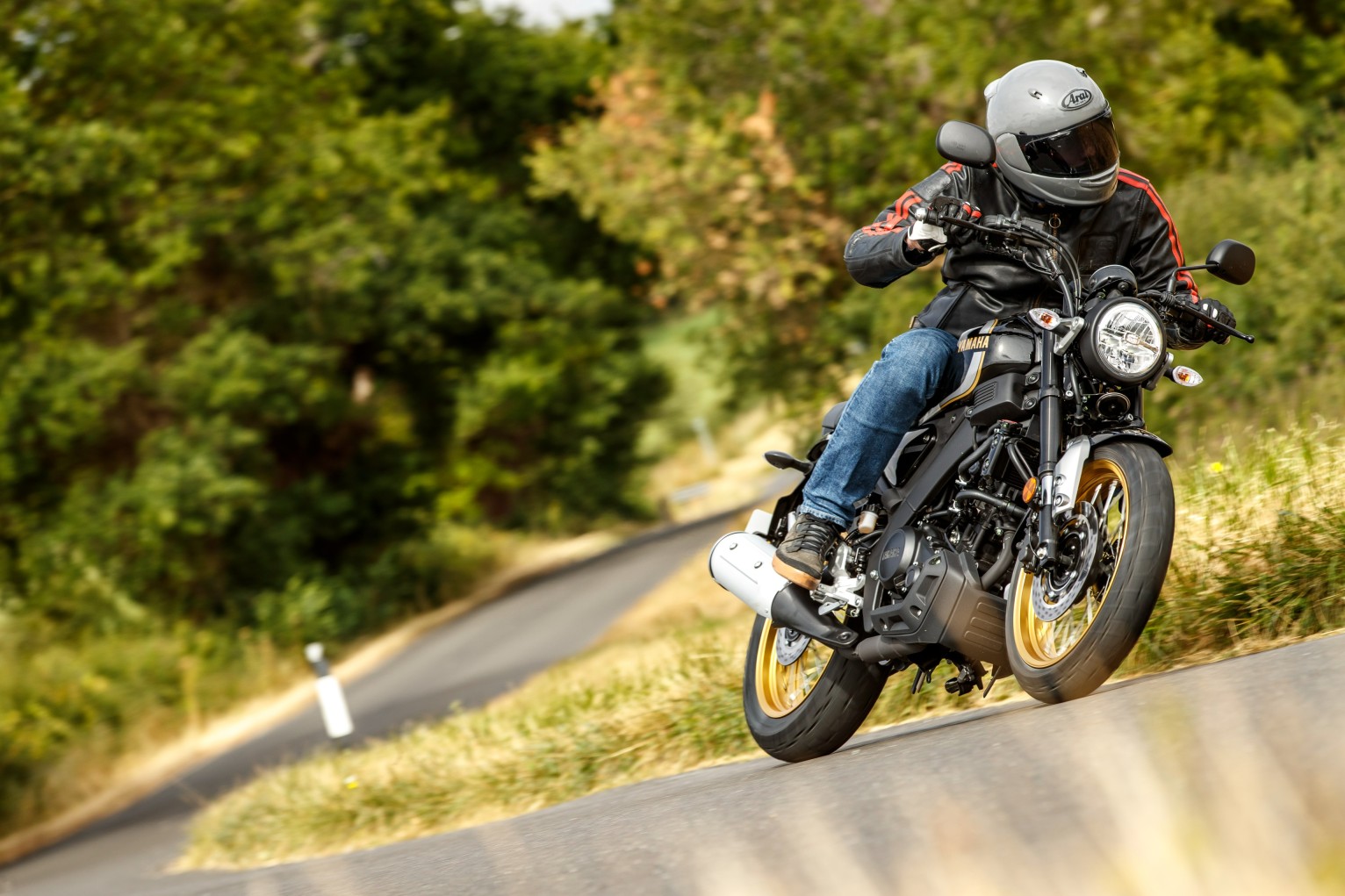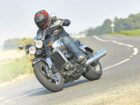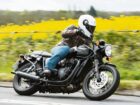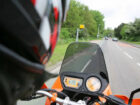When it comes to motorcycles, it’s not quite as simple as picking from a list of learner motorbikes. That’s because your age as well as the type of licence you have affects what you can have – here’s what to consider.
What does my licence allow me to ride?
If you’re 16 or over and have a provisional licence, you can ride mopeds or scooters up to 50cc. If you’re 17 or older, you can ride a motorbike up to 125cc but in both instances, you’ll also need to complete compulsory basic training (CBT) before you ride on public roads.
CBT is a course rather than a test so it’s not something you can pass or fail, you simply need to complete the course successfully. If you do, you’ll be given a certificate of completion which allows you to ride with L plates (or D plates if you live in Wales).
What are my options after taking compulsory basic training?
Your CBT certificate of completion is valid for two years. You can use this time to take your motorcycle theory and practical tests to earn your AM, A1 or A2 licence (more about these later).
The theory test is made up of two parts which are taken at the same time, a multiple choice section and a hazard perception test. You’ll need to pass both elements to pass overall. The test currently costs £23*.
The practical test is also made up of two parts, known as module one (an off-road test) and module two (an on-road test). You’ll need to pass module one before taking module two, but you’re allowed to book them at the same time or separately if you prefer. The two modules are priced differently so that’s something to be aware of when you book them. Currently, module one has a flat fee of £15.50* but module two costs either £75* during the week or £88.50* for evenings, weekends and bank holidays.
When you pass your theory and practical tests, you’ll be able to ride without L or D plates and can carry a pillion passenger. The licence you’re entitled to will depend on your age:
- 16 or over – AM licence
- 17 or over – A1 licence
- 19 or over – A2 licence
If you choose not to take your test, you can take CBT again which will enable you to ride for another two years (with L or D plates), or you can stop riding altogether.
What can I ride with an AM licence?
An AM licence entitles you to ride mopeds or scooters up to 50cc and below 4kW. You’ll be able to carry a pillion passenger, but you’re not allowed to ride on motorways (you can however ride on dual carriageways).
What can I ride with an A1 or A2 licence?
With an A1 licence you can ride a motorcycle up to 125cc and no more than 11kW. Whereas an A2 licence allows you to ride a motorcycle no more than 35kW. Both licences allow you to carry a pillion passenger and ride on motorways.

When can I get a category A licence without restrictions?
If you’re aged between 21 and 23 and have held an A2 licence for more than two years, you can ride a motorcycle of any size (a category A licence).
When you turn 24, you can ride a motorcycle of any size as long as you complete CBT and have passed the motorcycle theory and practical tests.
What do I need to know about buying a motorbike to learn on?
Although your age and licence will have some bearing on what you can choose, it’s a good idea to think about what you really need or want in your first motorbike. Factors worth considering before you part with your cash, include:
- Transmission type – whether you choose to have manual or automatic gears is down to personal preference and whether you want (or need) the added challenge of changing gears, especially if you’re likely to be riding in congested towns or cities.
- Buying new or used – there’s nothing like buying something brand-new but buying used could help your money go further and can mean being able to buy a higher specification bike that will fit your needs for more years to come.
- Use – think about how you’ll be using your bike, for example, will you mainly be riding in built-up places or commuting or is it your intention to only ride for pleasure?
- Practicalities – this can include things like servicing, having somewhere local to take your bike can make general maintenance much easier.
- Aesthetics – unless you really don’t mind and are only focused on budget and how practical your motorcycle is, aesthetics is also likely to play an important part in what you choose.
What are some of the most suitable motorbikes for learner riders?
Choosing the ‘best’ motorbike to learn on for you, will ultimately come down to age and licence entitlements as well as personal preference. To give you an idea of what’s out there, we’ve put together our top five:
- Aprilia SR 50 – best for anyone getting started or AM licence holders. It’s sturdy and durable, making it a solid choice for learners. You can pick up used models for around £700 or £2,700 new.
- Peugeot Speedfight 50 – another robust, durable choice for anyone learning or with an AM licence, the Speedfight 50 is one of the most enduring scooters (it’s been around for more than two decades). Used models will set you back around £850 or £1,900 new.
- Honda CB125R – a good quality build with good owner reliability ratings, it’s learner-friendly and also gets top marks for looks. Expect a used model to set you back between £3,000-£4,000.
- KTM 125 Duke – another 125cc suitable for learning on and also considered to have high build quality. It has the added bonus of being economical and also scores well for reliability. Buy used from £2,800, new from £4,299.
- KTM 390 Duke – one for A2 licence holders only, but considered a good introduction to the world of ‘big bikes’, fun to ride, aesthetically pleasing and scores highly for reliability. Buy used from around £3,400 or new from £5,149.
What learner motorbike insurance do I need?

Whether you’re learning or have just passed your test, you’ll need suitable motorbike insurance. Bear in mind that insurance costs vary depending on the type of motorbike you have and your own specific circumstances (such as your age, address, and the bike you have). You’ll also need to think about the activities you’ll be using your bike for, for example, whether it’s just for leisure or whether you’ll be commuting to work on it too.
Insurers are also likely to ask whether or not your bike’s been modified and if it has, what changes have been made. This is because some alterations can affect your premium depending on what they are.
If you’re not sure what you need or where to start, we’ve put together some tips for cheap cover, as well as advice on how best to shop around for motorcycle insurance.
























